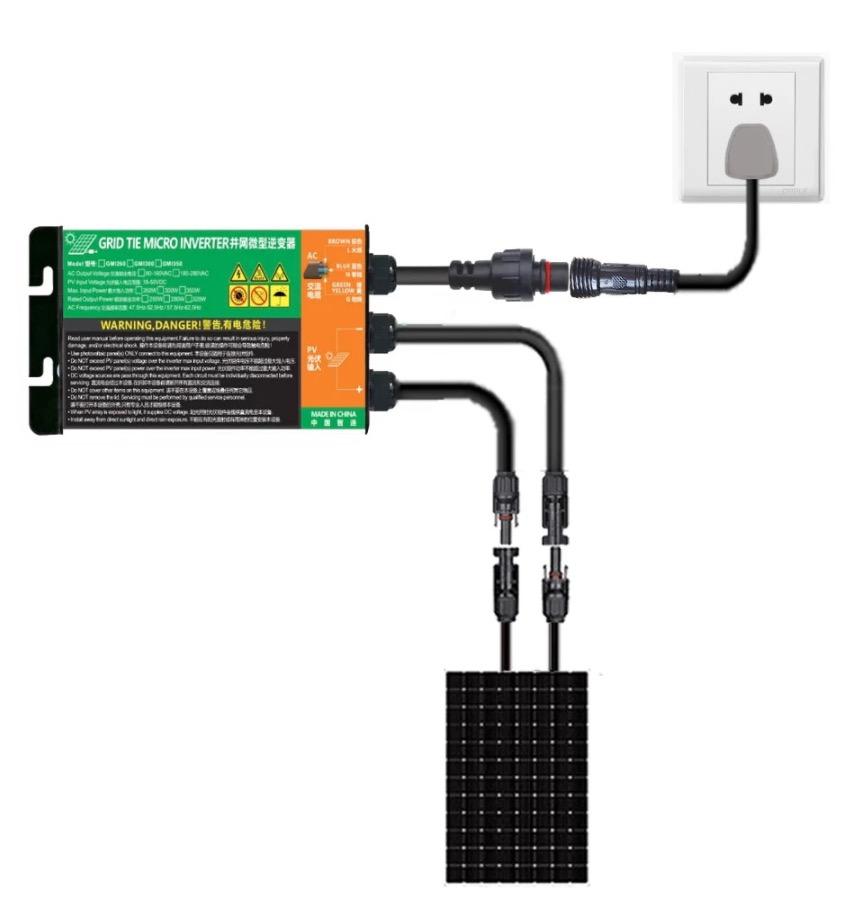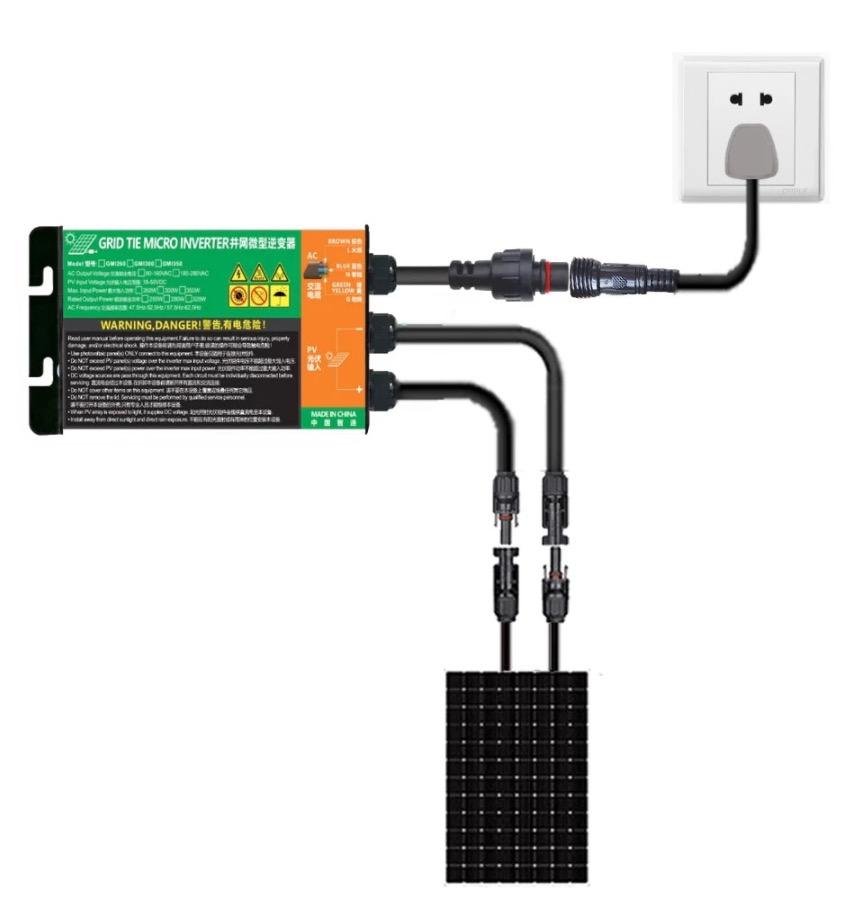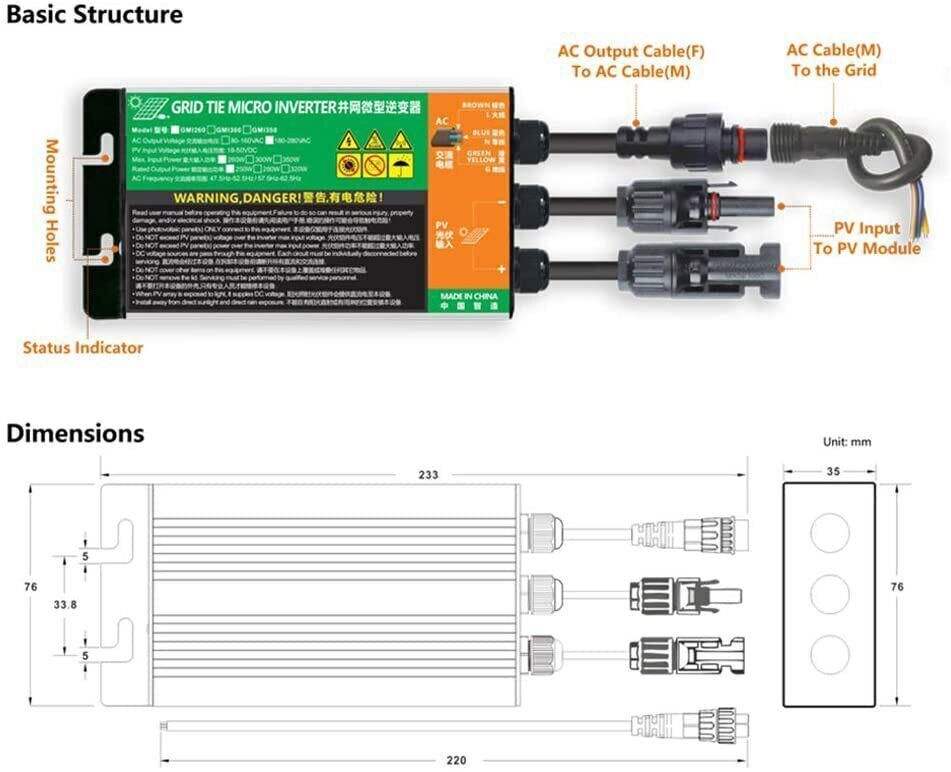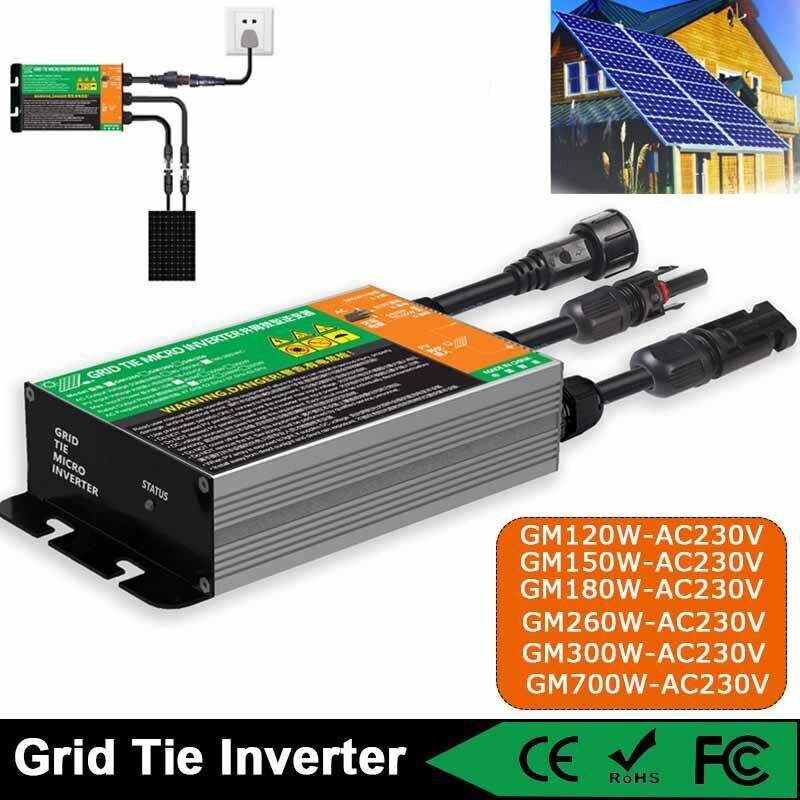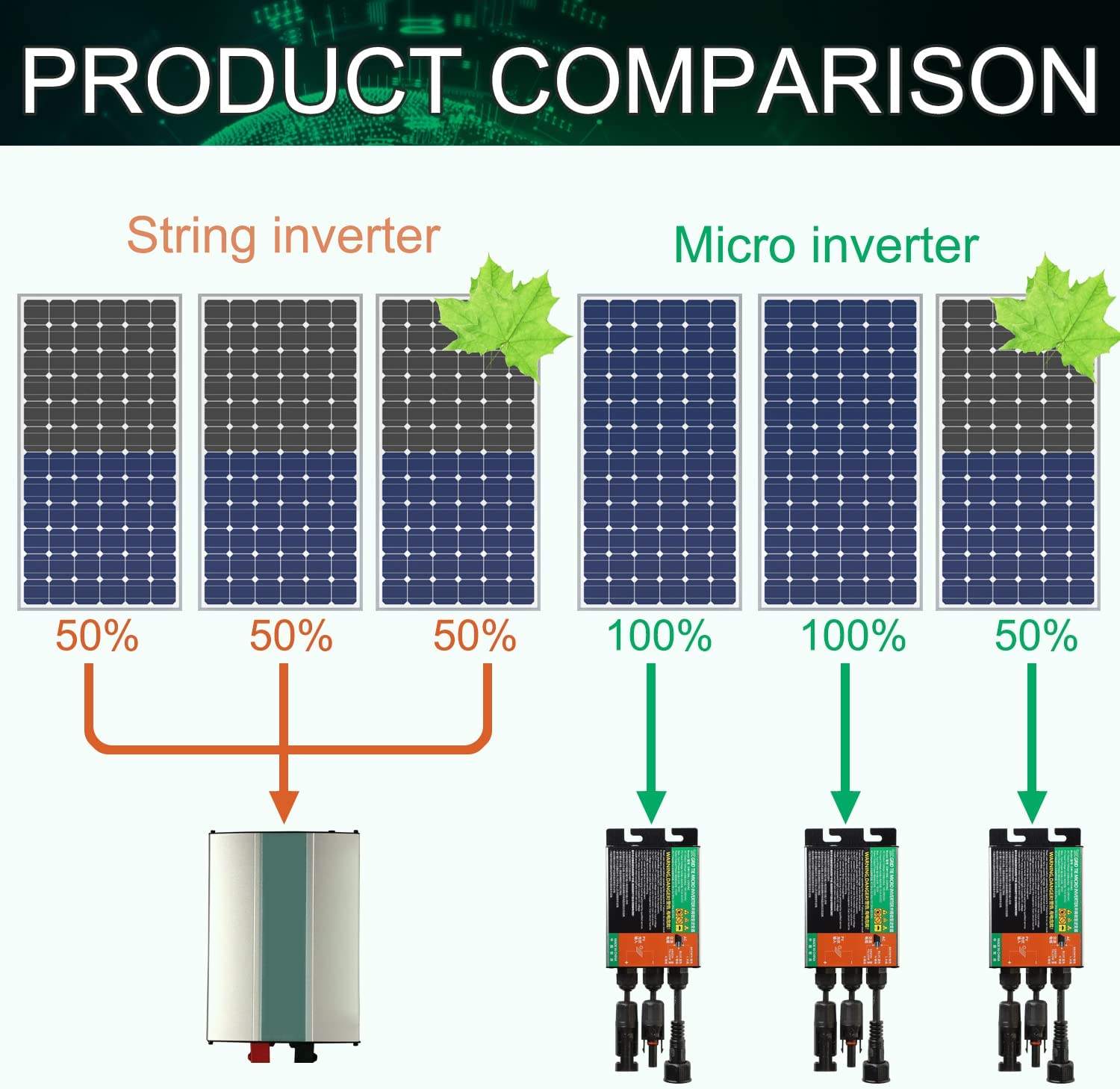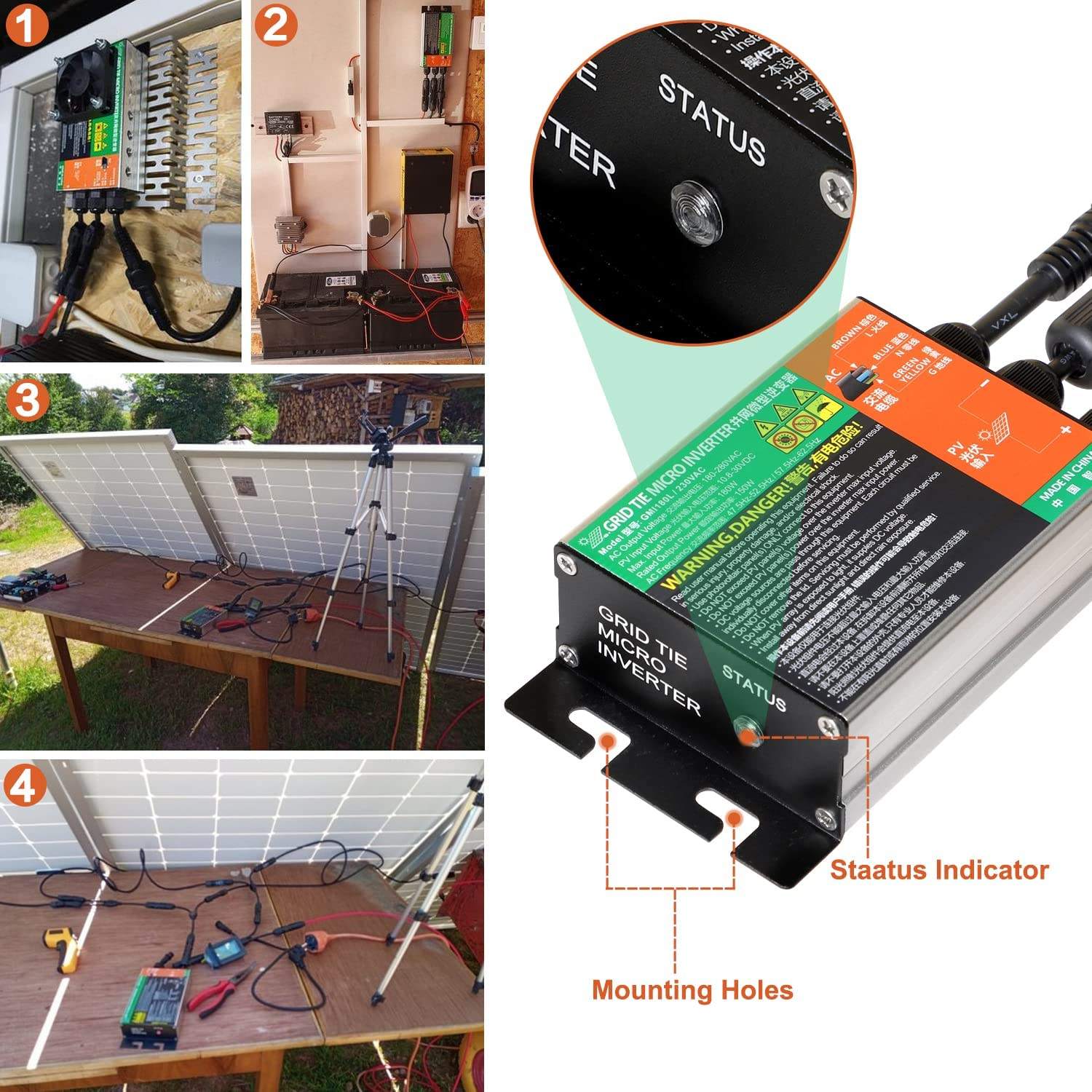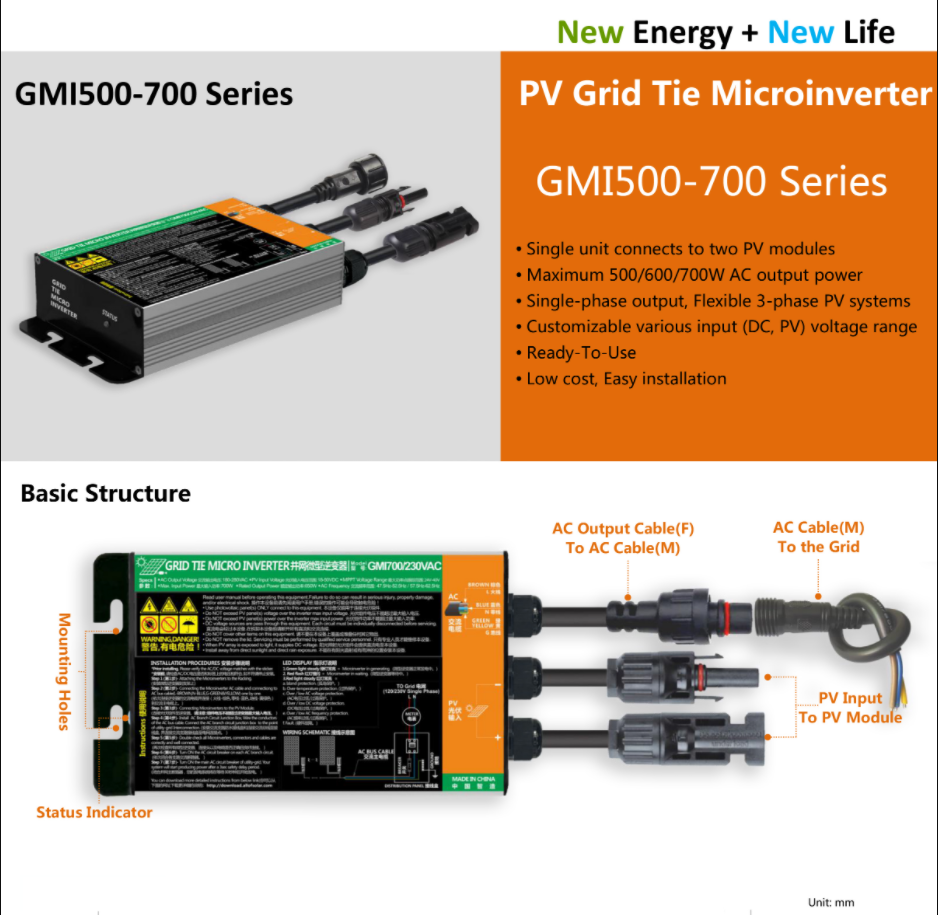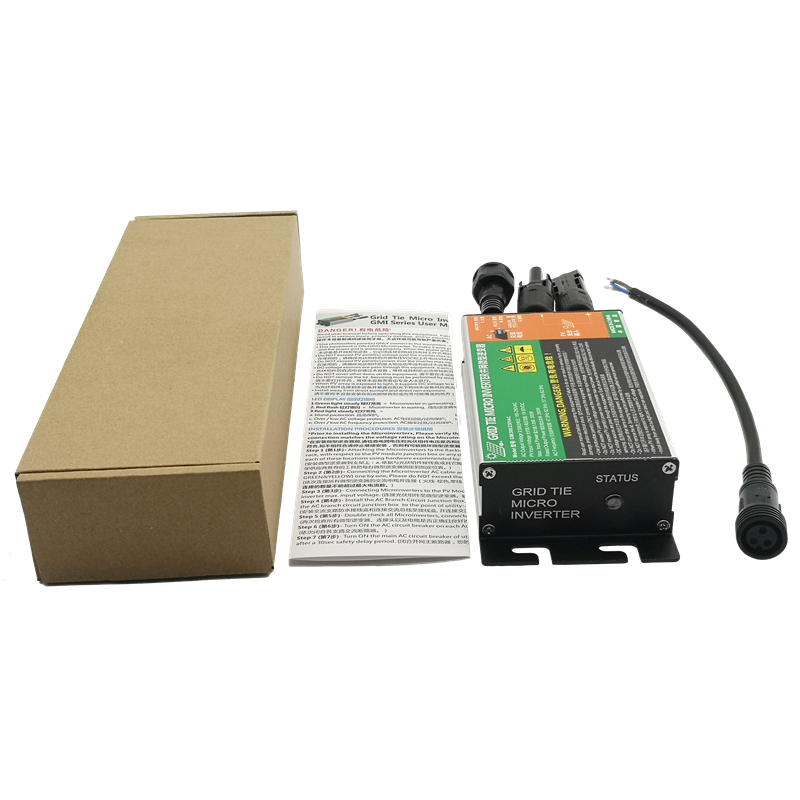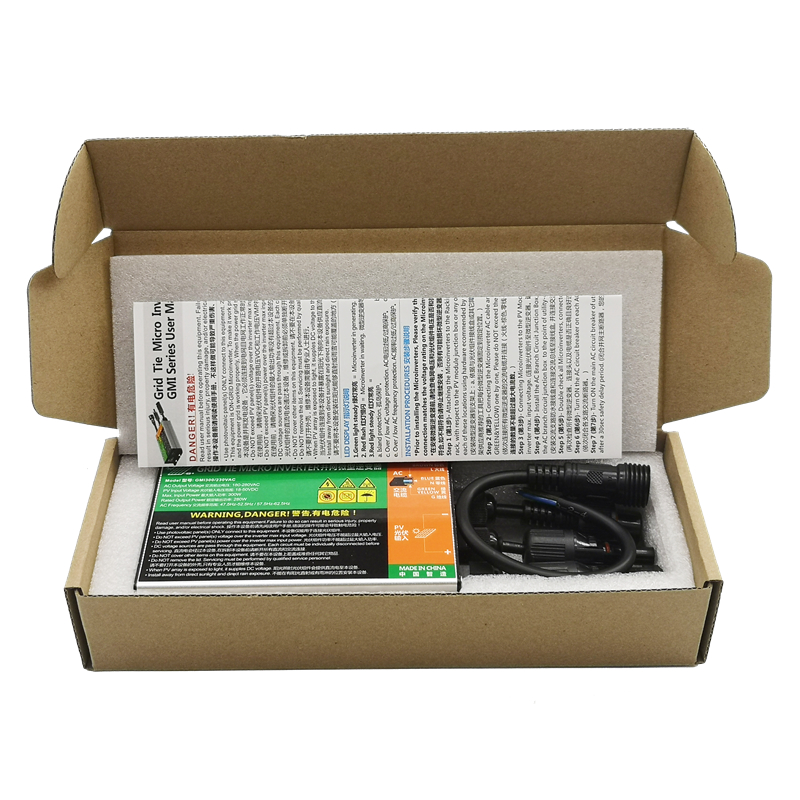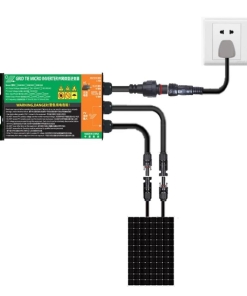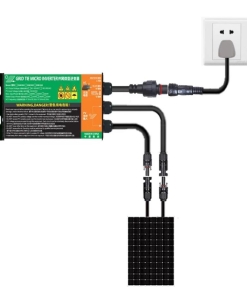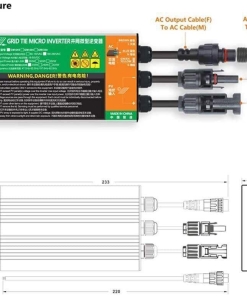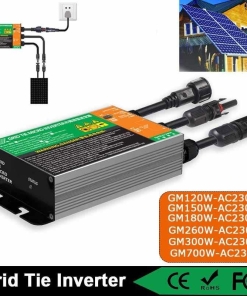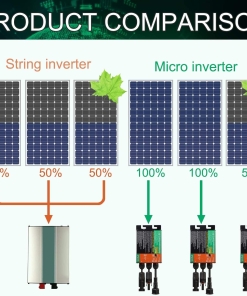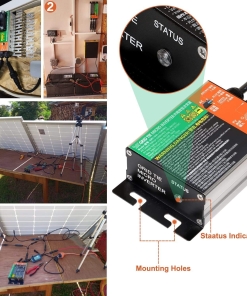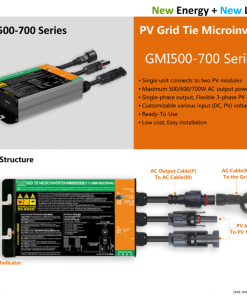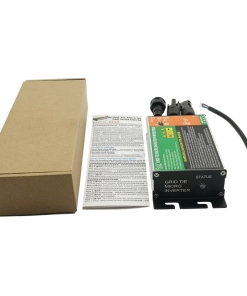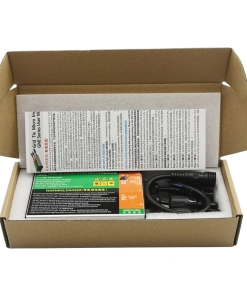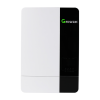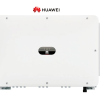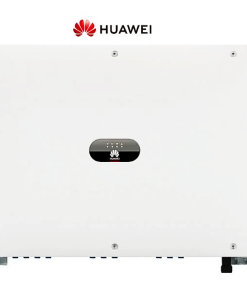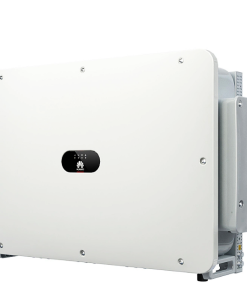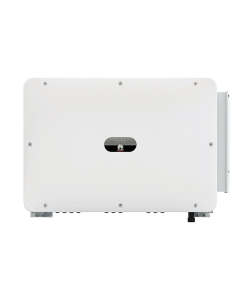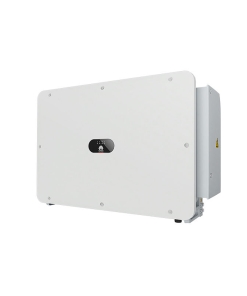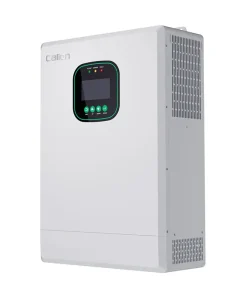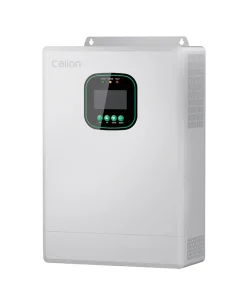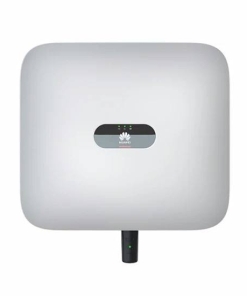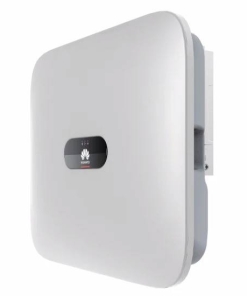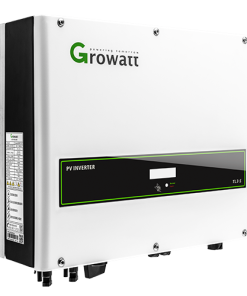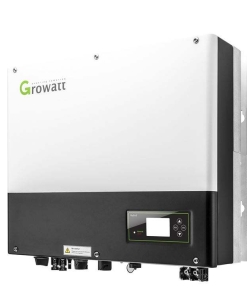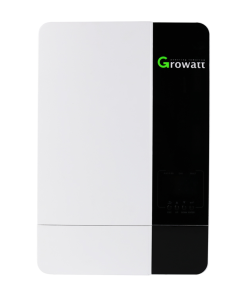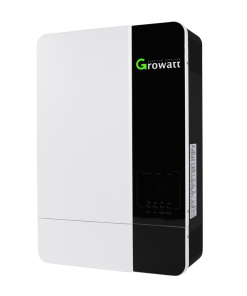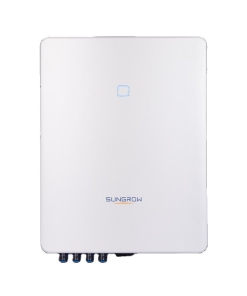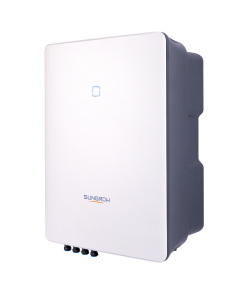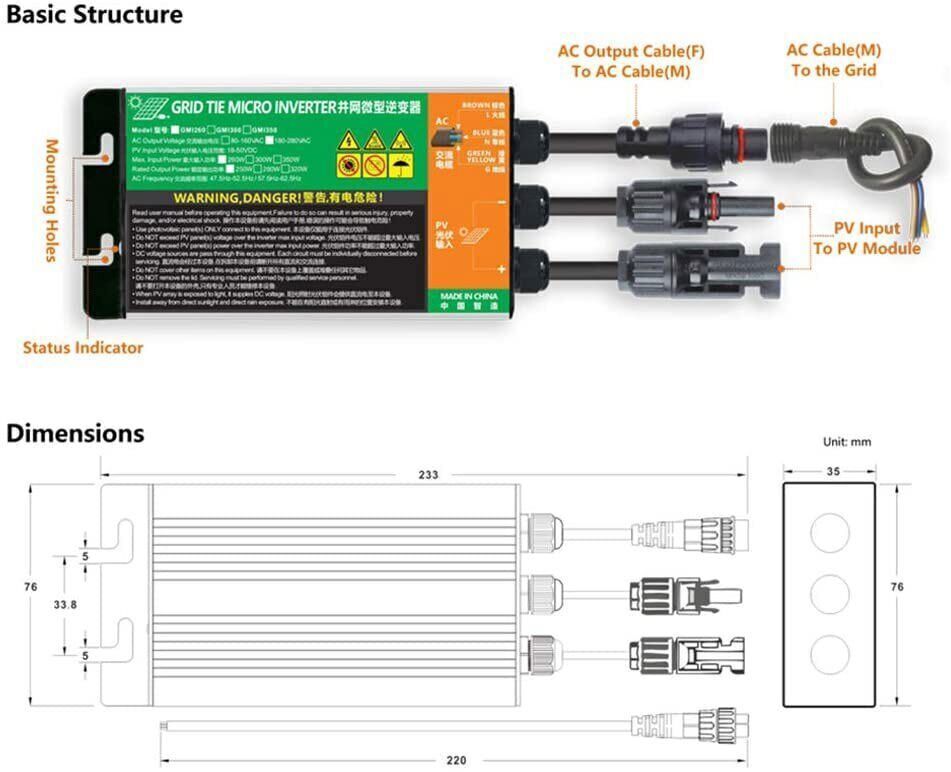
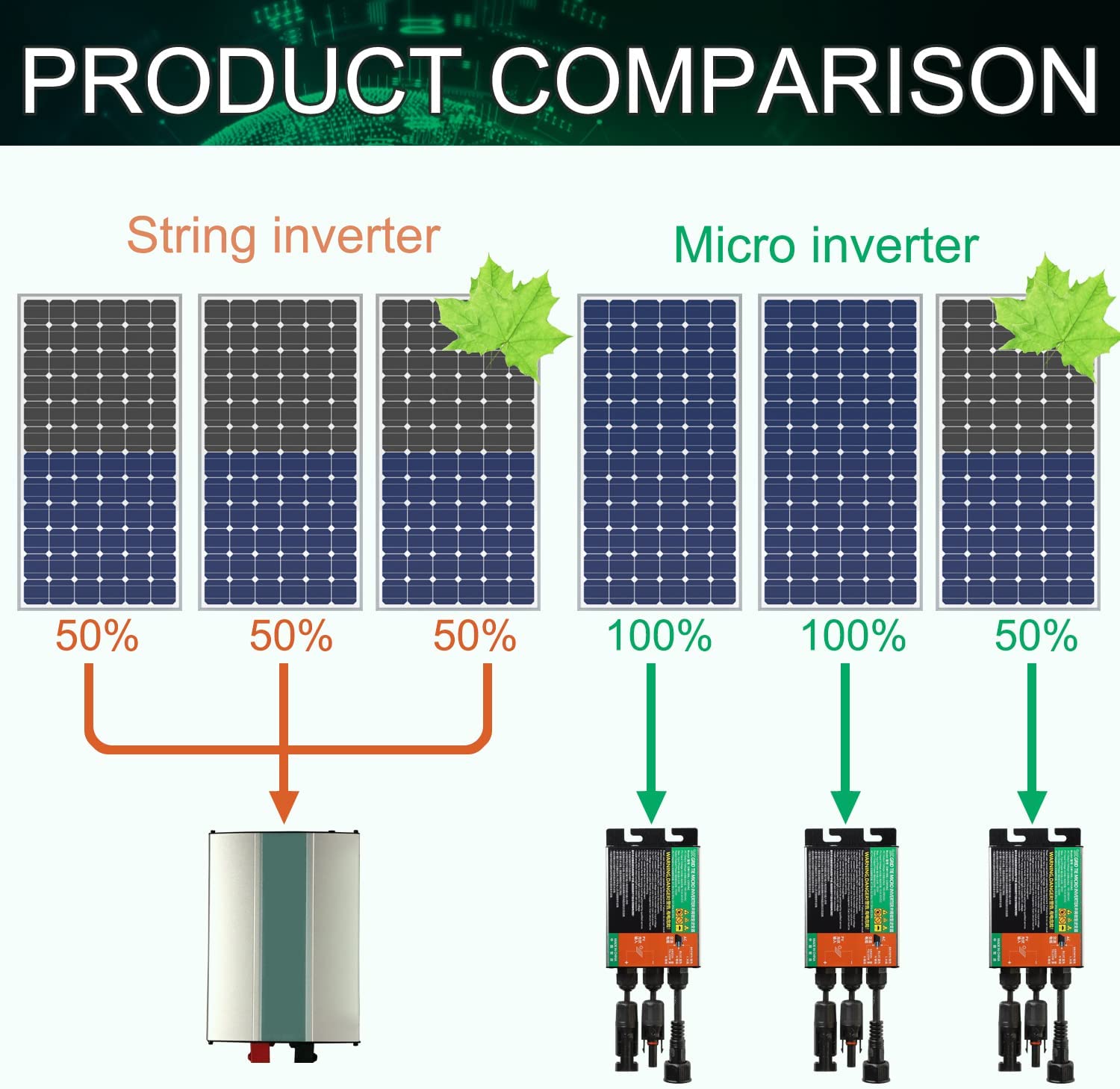
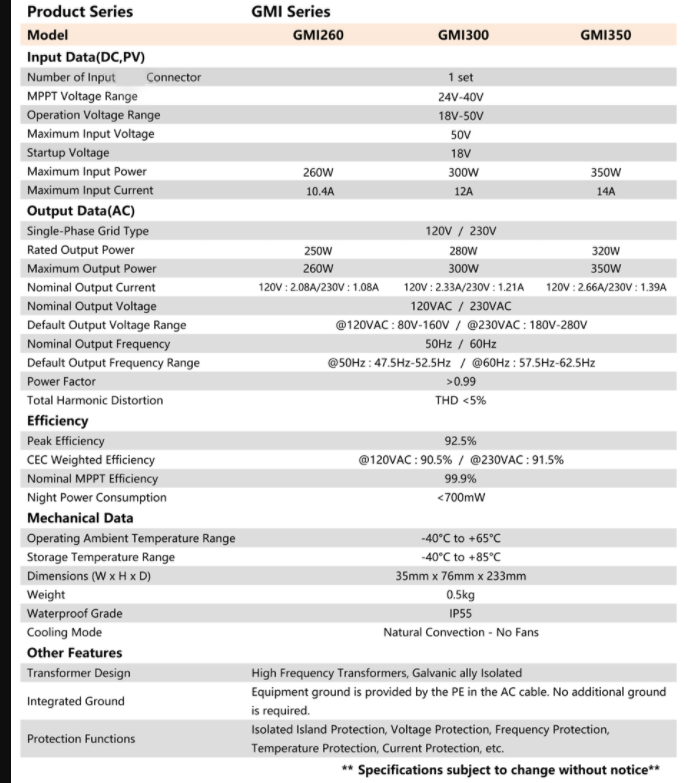
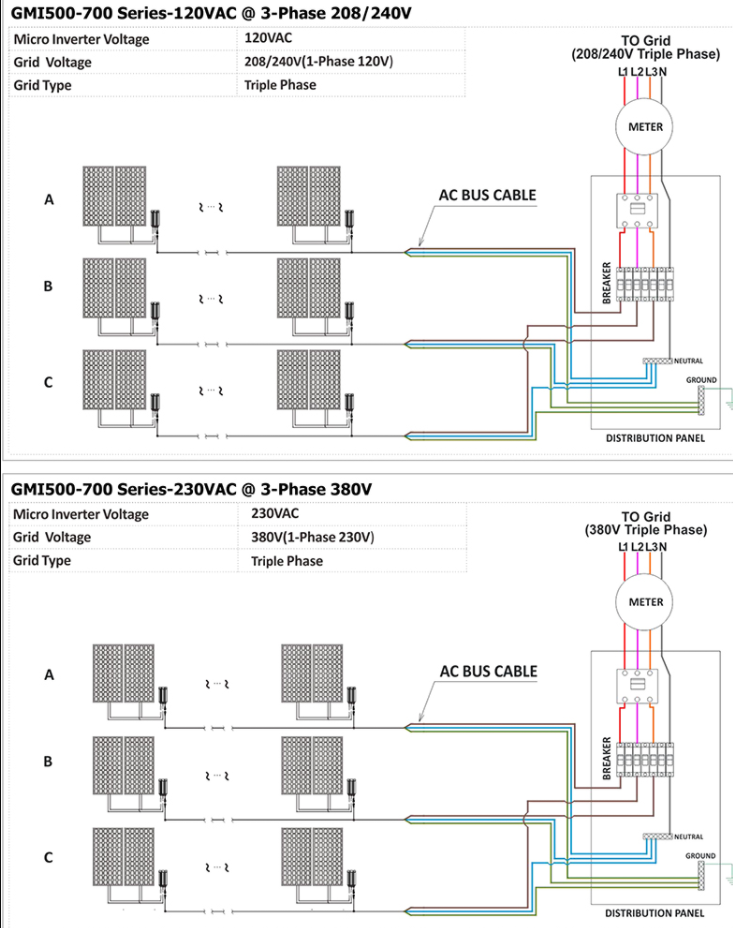
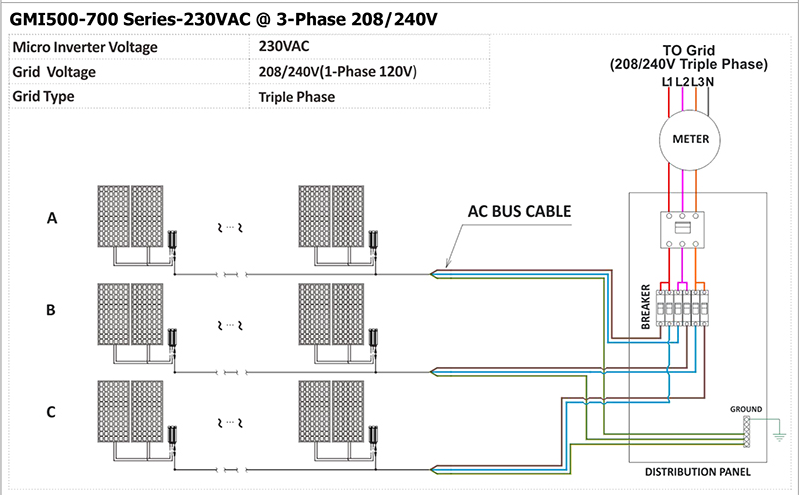
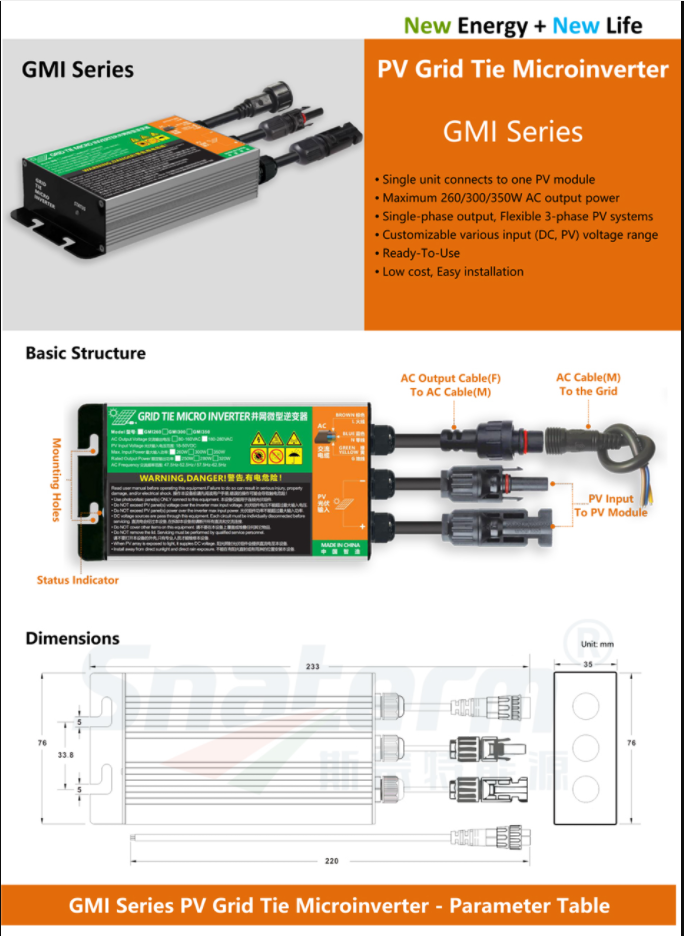
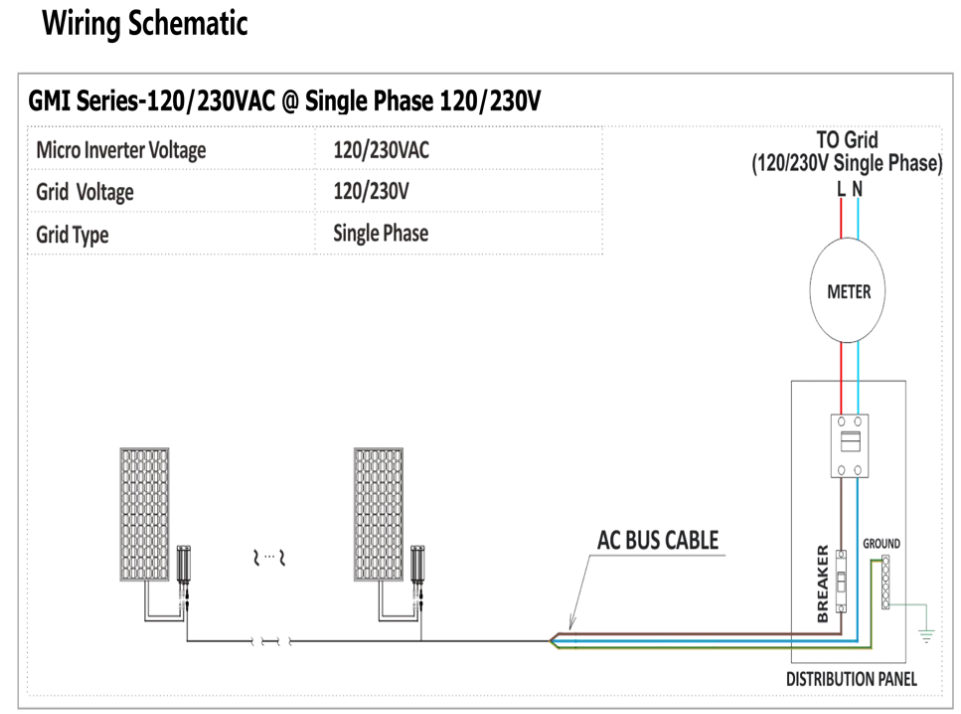
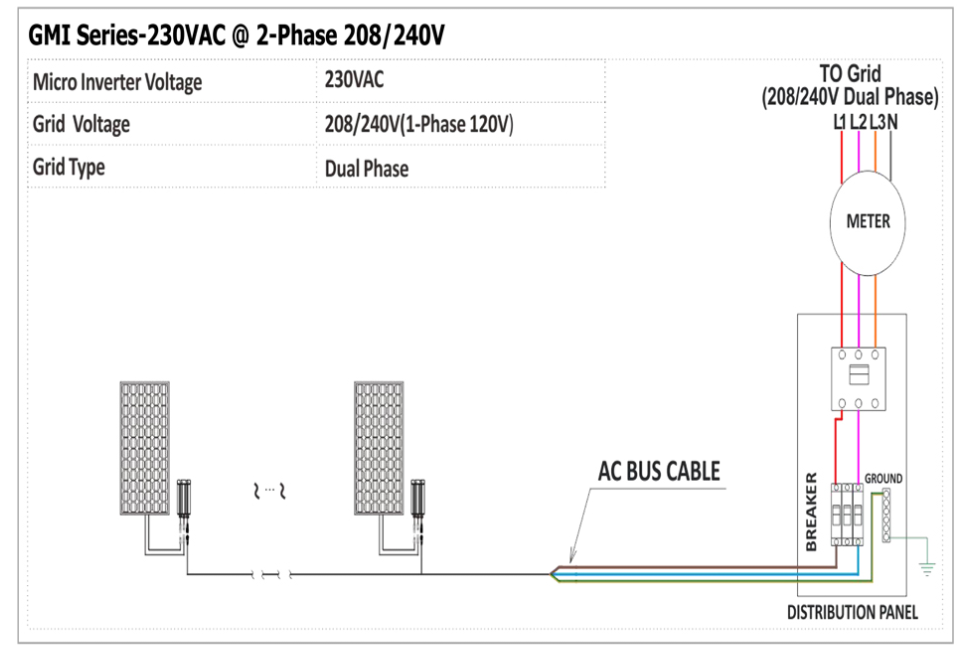
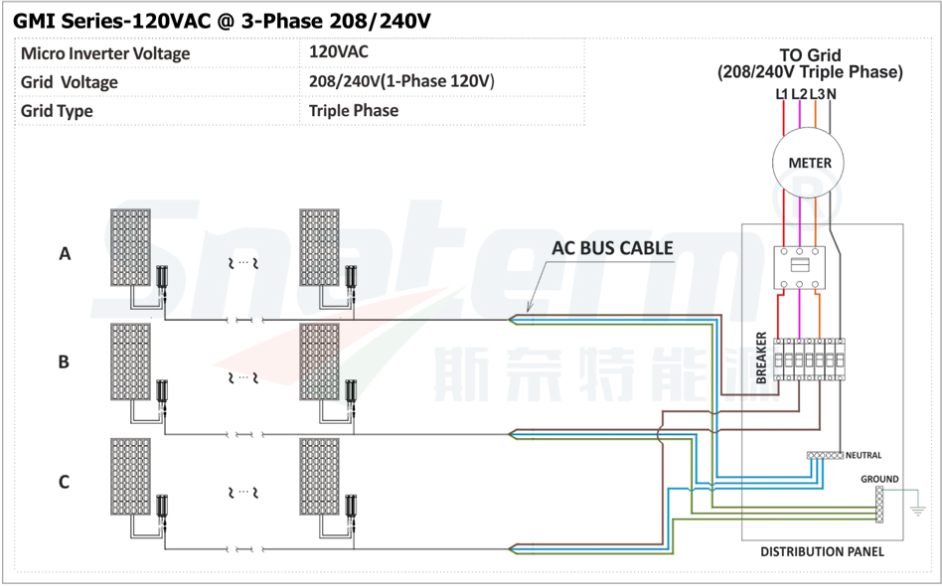
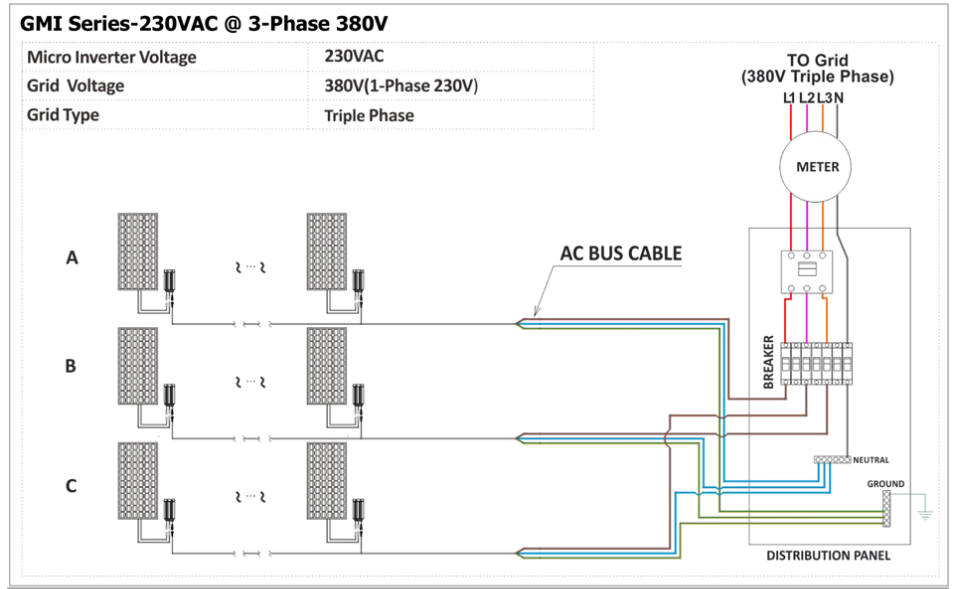
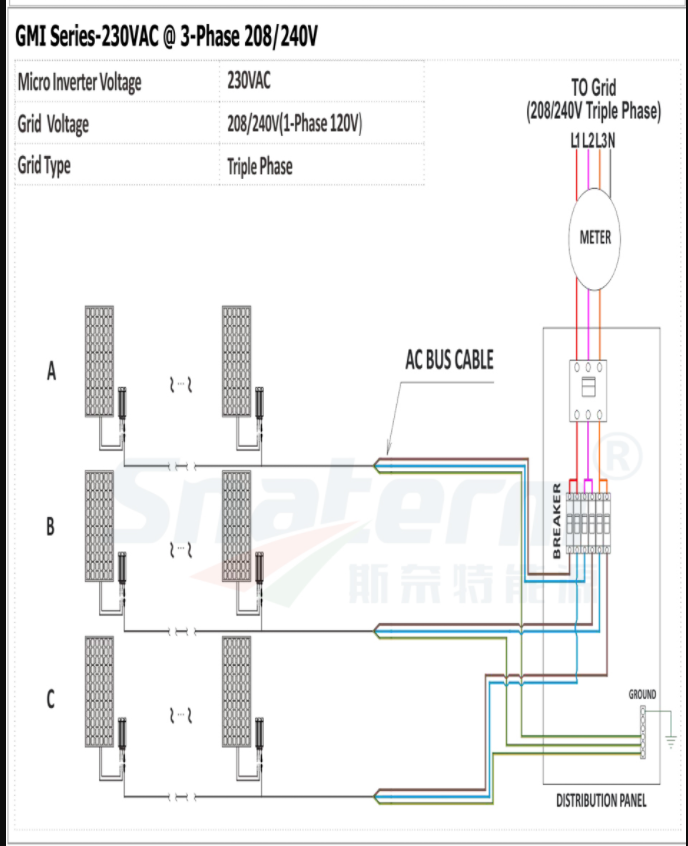
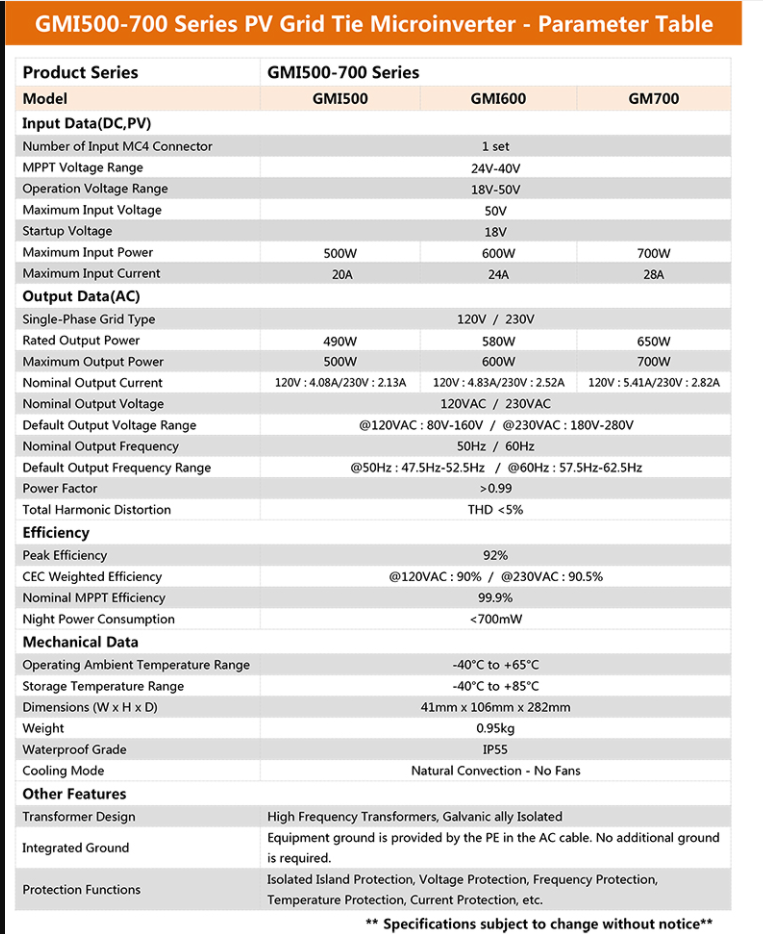
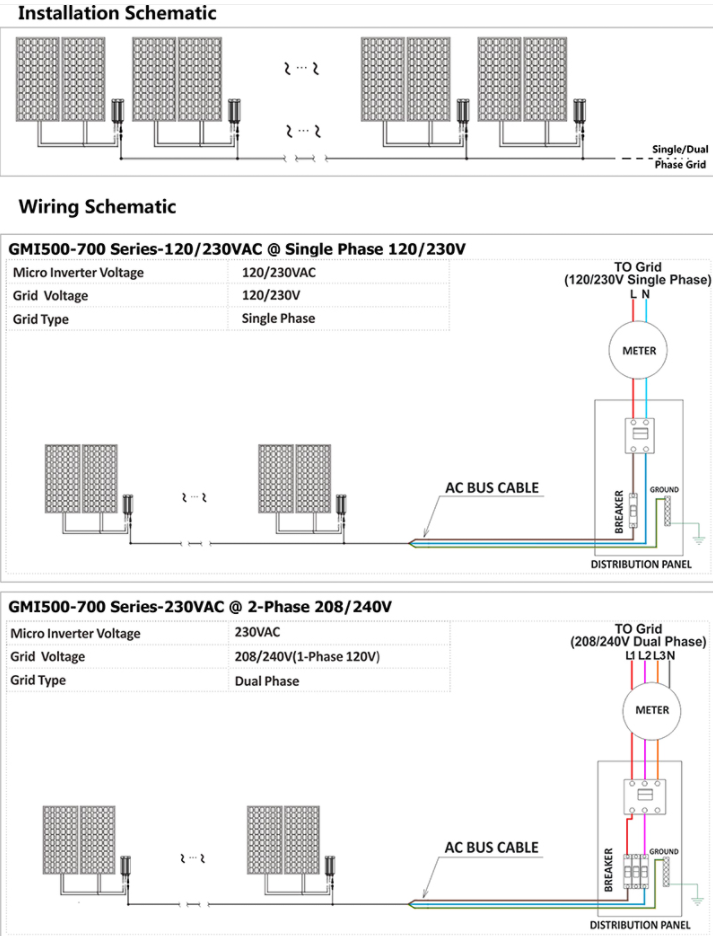
Solar PV Micro Inverter Description:
260W/300W/350W/500W/600W/700W Grid Tie inverter is a compact unit, which directly converts direct current into alternating current for powering appliances and/or office equipment and connecting to the utility grid. The AC output from the Smart Micro inverter is synchronized and in phase with the utility grid.
Solar PV Micro Inverter LED Display:
1. Green light steady=Microinverter in generating.
2. Red flash=Microinverter in waiting.
3. Red light steady
a.Island protection.
b.Over-temperature protection.
c.Over/low AC voltage protection.
d.Over/low DC voltage protection.
e.Over/low AC frequency protection.
f.Fault.
Package Include:
1XGrid Tie Inverter
1 x AC Cable 30CM
1 x English User's Manual
About voltage:
The 18-50V grid tie micro inverter will start up at 24V, after starting, the inverter can work in 18V-39V (Vmp). Solar Panel Voc cannot be higher than 50V.
Vmp = solar panel working voltage; Voc = solar panel open circuit voltage. So don’t think that 50V is the working voltage (Vmp)
Why not use 12V solar panels? 12V panel working voltage Vmp18-20V, open circuit voltage Voc20-24V.
the 12V panel is just a starting voltage. If the sunlight is weak, the working voltage will be lower than 18V. It is easy to make the inverter work unstable, and the inverter will start repeatedly. It is easy to damage the inverter.
Recommended Solar Panel Voltage: Vmp30-39V; Voc38-46V
User notice:
1.Use solar panels ONLY to connect to this equipment.
2.This equipment is ON-GRID Microinverter, To make it work properly, it must be connected to the power grid correctly, and the power grid is working properly, When the power grid stopped working, it will also stop generating.
3.Do NOT exceed PV panel(s) voltage over the inverter max input voltage.(Voc<50V)
4.Do NOT exceed PV panel(s) power over the inverter max input power.
5.The positive and negative poles of the solar panel cannot be reversed. If you extend the solar panel cable. You need to be careful about this problem.
6.Install away from direct sunlight and direct rain exposure.(Ventilated, dry, cool)
Advantages of solar inverters
The solar inverter is an important component in a solar energy system, converting the direct current (DC) produced by solar panels into alternating current (AC) that can be used by household appliances or sold back to the grid. One major advantage of solar inverters is their ability to boost the efficiency of solar panels. By converting DC to AC, solar inverters can optimize the power output of solar panels and reduce the amount of energy lost during the conversion process. Another advantage of solar inverters is their versatility. They can be installed in a variety of residential and commercial settings, and can adapt to meet the needs of different applications.
Additionally, solar inverters are low maintenance and can operate for many years with minimal servicing. They also provide a convenient way to monitor the performance of a solar energy system, allowing users to track energy production, system status, and potential faults.
Finally, solar inverters are environmentally friendly, producing zero emissions and reducing reliance on fossil fuels. In conclusion, solar inverters offer many advantages for those considering the switch to solar energy, including efficiency, versatility, low maintenance, and sustainability.
